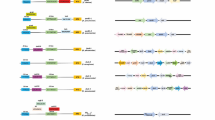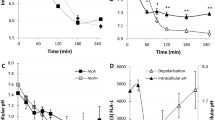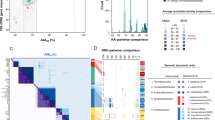Abstract
Intracellular pH (pHi) homeostasis is crucial for cellular functions and signal transduction across all kingdoms of life. In particular, bacterial pHi homeostasis is important for physiology, ecology, and pathogenesis. Here we report an exquisite bacterial acid-resistance (AR) mechanism in which proton leak elicits a pre-emptive AR response. A single bacterial cell undergoes quantal electrochemical excitation, termed “BacFlash”, which consists of membrane depolarization, transient pHi rise, and bursting production of reactive oxygen species. BacFlash ignition is dictated by acid stress in the form of proton leak across the plasma membrane and the rate of BacFlash occurrence is reversely correlated with the pHi buffering capacity. Through genome-wide screening, we further identify the ATP synthase Fo complex subunit a as the putative proton sensor for BacFlash biogenesis. Importantly, persistent BacFlash hyperactivity activates transcription of a panel of key AR genes and predisposes the cells to survive imminent extreme acid stress. These findings demonstrate a prototypical coupling between electrochemical excitation and nucleoid gene expression in prokaryotes.
Similar content being viewed by others
Log in or create a free account to read this content
Gain free access to this article, as well as selected content from this journal and more on nature.com
or
Change history
11 December 2023
A Correction to this paper has been published: https://doi.org/10.1038/s41422-023-00900-5
References
Talley, K. & Alexov, E. On the pH-optimum of activity and stability of proteins. Proteins 78, 2699–2706 (2010).
Rius, N., Sole, M., Francia, A. & Loren, J. G. Buffering capacity and H+ membrane conductance of gram-negative bacteria. FEMS Microbiol. Lett. 130, 103–110 (1995).
Casey, J. R., Grinstein, S. & Orlowski, J. Sensors and regulators of intracellular pH. Nat. Rev. Mol. Cell Biol. 11, 50–61 (2010).
Foster, J. W. Escherichia coli acid resistance: tales of an amateur acidophile. Nat. Rev. Microbiol. 2, 898–907 (2004).
Slonczewski, J. L., Fujisawa, M., Dopson, M. & Krulwich, T. A. Cytoplasmic pH measurement and homeostasis in bacteria and archaea. Adv. Microb. Physiol. 55, 1–79, 317 (2009).
Krulwich, T. A., Sachs, G. & Padan, E. Molecular aspects of bacterial pH sensing and homeostasis. Nat. Rev. Microbiol. 9, 330–343 (2011).
Kanjee, U. & Houry, W. A. Mechanisms of acid resistance in Escherichia coli. Annu. Rev. Microbiol. 67, 65–81 (2013).
Smith, D. K., Kassam, T., Singh, B. & Elliott, J. F. Escherichia coli has two homologous glutamate decarboxylase genes that map to distinct loci. J. Bacteriol. 174, 5820–5826 (1992).
De Biase, D., Tramonti, A., Bossa, F. & Visca, P. The response to stationary-phase stress conditions in Escherichia coli: role and regulation of the glutamic acid decarboxylase system. Mol. Microbiol. 32, 1198–1211 (1999).
Hersh, B. M., Farooq, F. T., Barstad, D. N., Blankenhorn, D. L. & Slonczewski, J. L. A glutamate-dependent acid resistance gene in Escherichia coli. J. Bacteriol. 178, 3978–3981 (1996).
Hong, W., Wu, Y. E., Fu, X. & Chang, Z. Chaperone-dependent mechanisms for acid resistance in enteric bacteria. Trends Microbiol. 20, 328–335 (2012).
Nicholls, D. G. & Ferguson, S. L. Bioenergetics. (Academic Press, London, 2002).
Richard, H. & Foster, J. W. Escherichia coli glutamate- and arginine-dependent acid resistance systems increase internal pH and reverse transmembrane potential. J. Bacteriol. 186, 6032–6041 (2004).
Miesenbock, G., De Angelis, D. A. & Rothman, J. E. Visualizing secretion and synaptic transmission with pH-sensitive green fluorescent proteins. Nature 394, 192–195 (1998).
Li, Y. & Tsien, R. W. pHTomato, a red, genetically encoded indicator that enables multiplex interrogation of synaptic activity. Nat. Neurosci. 15, 1047–1053 (2012).
Bohnert, J. A., Karamian, B. & Nikaido, H. Optimized Nile Red efflux assay of AcrAB-TolC multidrug efflux system shows competition between substrates. Antimicrob. Agents Chemother. 54, 3770–3775 (2010).
Kralj, J. M., Hochbaum, D. R., Douglass, A. D. & Cohen, A. E. Electrical spiking in Escherichia coli probed with a fluorescent voltage-indicating protein. Science 333, 345–348 (2011).
Wang, W. et al. Superoxide flashes in single mitochondria. Cell 134, 279–290 (2008).
Hou, T., Wang, X., Ma, Q. & Cheng, H. Mitochondrial flashes: new insights into mitochondrial ROS signalling and beyond. J. Physiol. 592, 3703–3713 (2014).
Wang, W. et al. Mitochondrial flash: integrative reactive oxygen species and pH signals in cell and organelle biology. Antioxid. Redox Signal 25, 534–549 (2016).
Wang, X. et al. Protons trigger mitochondrial flashes. Biophys. J. 111, 386–394 (2016).
Martinac, B., Buechner, M., Delcour, A. H., Adler, J. & Kung, C. Pressure-sensitive ion channel in Escherichia coli. Proc. Natl. Acad. Sci. USA 84, 2297–2301 (1987).
Perozo, E. Gating prokaryotic mechanosensitive channels. Nat. Rev. Mol. Cell Biol. 7, 109–119 (2006).
Wang, J., Yan, D., Dixon, R. & Wang, Y. P. Deciphering the principles of bacterial nitrogen dietary preferences: a strategy for nutrient containment. MBio 7, e00792–16 (2016).
Yoch, D. C., Zhang, Z. M. & Claybrook, D. L. Methylamine metabolism and its role in nitrogenase “switch off” in Rhodopseudomonas capsulata. Arch. Microbiol. 134, 45–48 (1983).
Jayakumar, A., Epstein, W. & Barnes, E. M. Jr Characterization of ammonium (methylammonium)/potassium antiport in Escherichia coli. J. Biol. Chem. 260, 7528–7532 (1985).
Lund, P., Tramonti, A. & De Biase, D. Coping with low pH: molecular strategies in neutralophilic bacteria. FEMS Microbiol. Rev. 38, 1091–1125 (2014).
Baba, T. et al. Construction of Escherichia coli K-12 in-frame, single-gene knockout mutants: the Keio collection. Mol. Syst. Biol. 2, 2006.0008 (2006).
Li, K. et al. Superoxide flashes reveal novel properties of mitochondrial reactive oxygen species excitability in cardiomyocytes. Biophys. J. 102, 1011–1021 (2012).
Fillingame, R. H. & Steed, P. R. Half channels mediating H(+) transport and the mechanism of gating in the Fo sector of Escherichia coli F1Fo ATP synthase. Biochim. Biophys. Acta. 1837, 1063–1068 (2014).
Allegretti, M. et al. Horizontal membrane-intrinsic alpha-helices in the stator a-subunit of an F-type ATP synthase. Nature 521, 237–240 (2015).
Miller, J. H. Experiments in Molecular Genetics. (Cold Spring Harbor Laboratory Press, New York, 1972).
Bruni, G. N., Weekley, R. A., Dodd, B. J. T. & Kralj, J. M. Voltage-gated calcium flux mediates Escherichia coli mechanosensation. Proc. Natl. Acad. Sci. USA 114, 9445–9450 (2017).
Breckwoldt, M. O. et al. Multiparametric optical analysis of mitochondrial redox signals during neuronal physiology and pathology in vivo. Nat. Med. 20, 555–560 (2014).
Zhang, X. et al. Superoxide constitutes a major signal of mitochondrial superoxide flash. Life Sci. 93, 178–186 (2013).
Wei-LaPierre, L. et al. Respective contribution of mitochondrial superoxide and pH to mitochondria-targeted circularly permuted yellow fluorescent protein (mt-cpYFP) flash activity. J. Biol. Chem. 288, 10567–10577 (2013).
Feng, G. et al. Mitoflash biogenesis and its role in the autoregulation of mitochondrial proton electrochemical potential. J. Gen. Physiol. 151, 727–737 (2019).
Bernardi, P., Rasola, A., Forte, M. & Lippe, G. The mitochondrial permeability transition pore: channel formation by F-ATP synthase, integration in signal transduction, and role in pathophysiology. Physiol. Rev. 95, 1111–1155 (2015).
Carraro, M., Carrer, A., Urbani, A. & Bernardi, P. Molecular nature and regulation of the mitochondrial permeability transition pore(s), drug target(s) in cardioprotection. J. Mol. Cell Cardiol. 144, 76–86 (2020).
Archibald, J. M. endosymbiosis and eukaryotic cell evolution. Curr. Biol. 25, R911–R921 (2015).
Wang, X. et al. Mitochondrial flashes regulate ATP homeostasis in the heart. Elife 6, e23908 (2017).
Fang, H. et al. Imaging superoxide flash and metabolism-coupled mitochondrial permeability transition in living animals. Cell Res. 21, 1295–1304 (2011).
Fu, Z. X. et al. Dendritic mitoflash as a putative signal for stabilizing long-term synaptic plasticity. Nat. Commun. 8, 31 (2017).
Ahmad, D. & Newman, E. B. A deficiency in cyclic AMP results in pH-sensitive growth of Escherichia coli K-12. J. Bacteriol. 170, 3443–3447 (1988).
Grenier, F., Matteau, D., Baby, V. & Rodrigue, S. Complete genome sequence of Escherichia coli BW25113. Genome Announc. 2, e01038–14 (2014).
Kulahoglu, C. & Brautigam, A. Quantitative transcriptome analysis using RNA-seq. Methods Mol. Biol. 1158, 71–91 (2014).
Burton, N. A., Johnson, M. D., Antczak, P., Robinson, A. & Lund, P. A. Novel aspects of the acid response network of E. coli K-12 are revealed by a study of transcriptional dynamics. J. Mol. Biol. 401, 726–742 (2010).
You, C. et al. Coordination of bacterial proteome with metabolism by cyclic AMP signalling. Nature 500, 301–306 (2013).
Reddy, B. S. & Chatterji, B. N. An FFT-based technique for translation, rotation, and scale-invariant image registration. IEEE Trans Image Process 5, 1266–1271 (1996).
Otsu, N. A Threshold Selection Method from Gray-Level Histograms. IEEE Trans. Syst. Man Cybern. 9, 62–66 (1979).
Ahmad, M. B. & Tae-Sun, C. Local threshold and Boolean function based edge detection. IEEE Trans. Consumer Electronics 45, 674–679 (1999).
Shafait, F., Keysers, D. & Breuel, T. M. In Electronic Imaging. 6 (SPIE) (2008).
Borgefors, G. Distance transformations in digital images. Comput. Vis. Gr. Image Proc. 34, 344–371 (1986).
Vincent, L. & Soille, P. Watersheds in digital spaces: an efficient algorithm based on immersion simulations. IEEE Trans. Pattern Anal. Mach. Intell. 13, 583–598 (1991).
Haris, K., Efstratiadis, S. N. & Maglaveras, N. In Proceedings 1998 International Conference on Image Processing. ICIP98 (Cat. No.98CB36269). 338–342 vol. 333.
Bleau, A. & Leon, L. J. Watershed-based segmentation and region merging. Comput. Vis. Image Underst. 77, 317–370 (2000).
Acknowledgements
We thank Dr. Yi-Ping Wang for the gifts of pMP190 plasmid and PKUW13 and PKUW151 strains, Dr. Liangyi Chen for the gift of pHluorin plasmid, Dr. Chuanyun Li and Dr. Wanqiu Ding for bioinformatics analysis, Mr. Dapeng Zhang for helping with automated BacFlash detection, Dr. Zhenzhen Rao for ANOVA analysis, Dr. Peng Yu and Mrs. Zhengling Yang for technical assistance, and Drs. Conghui You, Shiqiang Wang, and Peng Zou for valuable comments. This work was supported by the National Key Basic Research Program of China (2017YFA0504000 and 2016YFA0500403) and the National Science Foundation of China (31670039, 81827809, 31821091 and 31971158).
Author information
Authors and Affiliations
Contributions
D.W., W.Q., W.N., Z.L., and Y.Z. performed experiments. Y.Y., J.L., and T.S. developed algorithms and software for automated BacFlash detection. X.W. and H.C. conceived and supervised the project and wrote the manuscript with inputs from all co-authors.
Corresponding authors
Ethics declarations
Competing interests
The authors declare no competing interests.
Additional information
The original online version of this article was revised: in the 'Acknowledgements' section of this article, one of the grant numbers relating to the National Science Foundation of China was incorrectly given as 8182780030 and should have been 81827809.
Supplementary information
Rights and permissions
Springer Nature or its licensor (e.g. a society or other partner) holds exclusive rights to this article under a publishing agreement with the author(s) or other rightsholder(s); author self-archiving of the accepted manuscript version of this article is solely governed by the terms of such publishing agreement and applicable law.
About this article
Cite this article
Wu, D., Qi, W., Nie, W. et al. BacFlash signals acid-resistance gene expression in bacteria. Cell Res 31, 703–712 (2021). https://doi.org/10.1038/s41422-020-00431-3
Received:
Accepted:
Published:
Issue date:
DOI: https://doi.org/10.1038/s41422-020-00431-3



